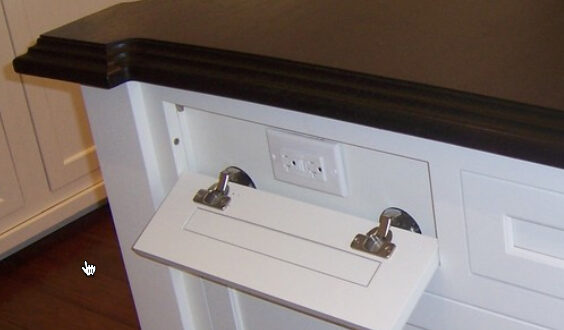The Hidden Key to a Clutter-Free Living Room: Outlets You Won’t See
Let’s face it, the modern living room is a technological wonderland. From sprawling TVs and immersive sound systems to essential device chargers and ambient lighting, our lives are plugged in. But all those devices come with a price: a tangled web of cords and the unsightly presence of power outlets. It’s a visual assault that can undo even the most meticulously designed space, leaving you feeling stressed and your living room looking more like a server room.
But fear not! There’s a solution that’s both practical and aesthetically pleasing: hidden outlets. By strategically concealing your power sources, you can maintain a clean, minimalist look without sacrificing functionality. This isn’t just about aesthetics; it’s about creating a more peaceful and inviting atmosphere in your home. Imagine a living room where the focus is on the beautiful furniture, the artwork, and the people you share it with, not on the power cords snaking across the floor. That’s the promise of hidden outlets. We’ll delve into how to achieve this, exploring various types of hidden outlets, strategic placement, and even DIY solutions. So, unplug from the visual clutter and get ready to transform your living room into a haven of calm and order.
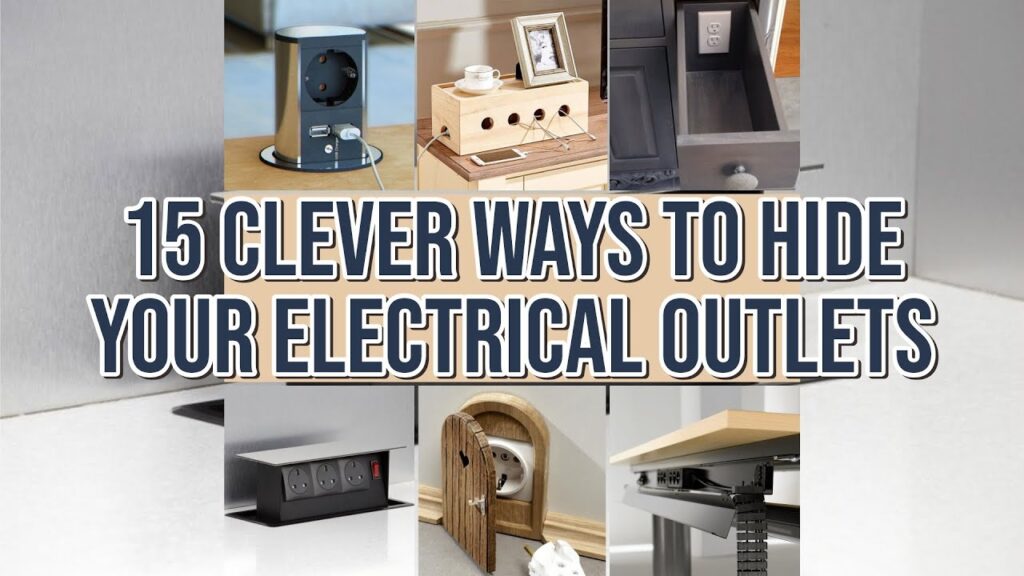
Why Hidden Outlets Are a Game-Changer for Living Room Design
Before we dive into the “how,” let’s explore the “why.” Why are hidden outlets so transformative for living room design? The benefits extend far beyond just aesthetics.
1. Aesthetic Appeal: A Visually Clean Space
This is the most obvious benefit, and arguably the most impactful. Hidden outlets contribute to a cleaner, more streamlined look. By eliminating the visual clutter of exposed outlets and cords, you create a sense of calm and order. The eye is no longer drawn to the distractions of tangled wires, allowing you to truly appreciate the design elements of your living room – the textures, colors, and overall ambiance.

2. Safety First: Protecting Children and Pets
Exposed outlets, especially those with dangling cords, can be a safety hazard, particularly for young children and pets. They’re curious, and those little holes and tempting cords are irresistible. Hidden outlets, especially those designed with safety features like tamper-resistant receptacles or pop-up mechanisms, can significantly reduce the risk of electric shock or entanglement. It’s a simple measure that can provide immense peace of mind.
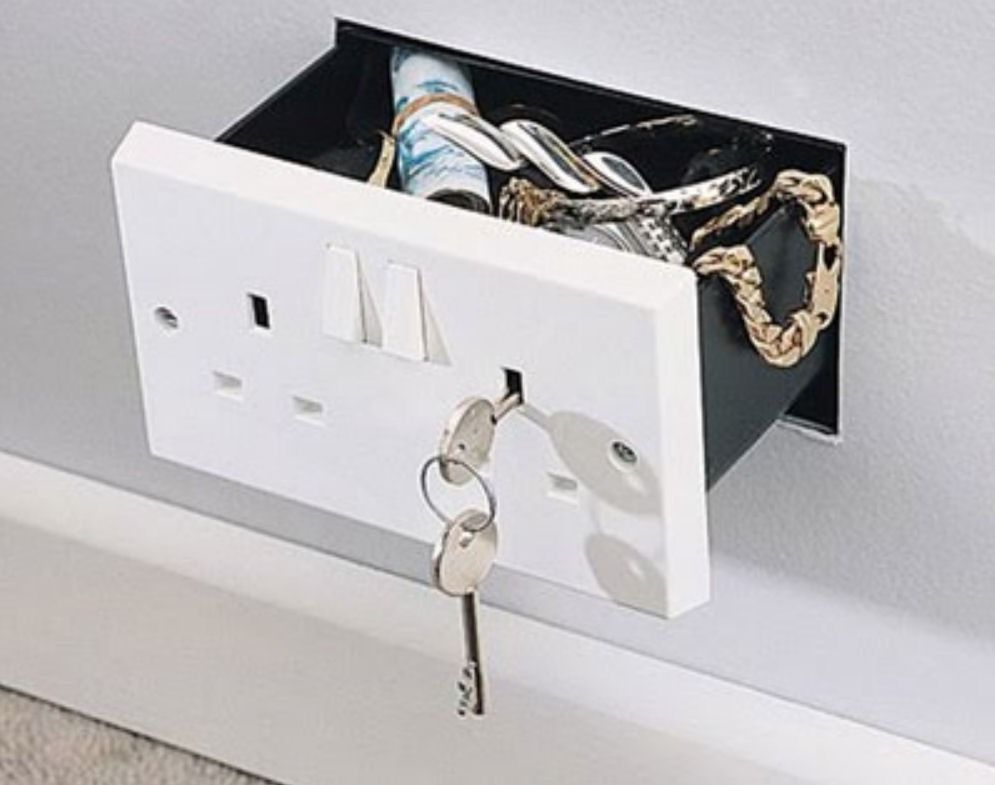
3. Maximizing Space and Functionality
Strategically placed hidden outlets can actually help you maximize the use of your living room space. Think about it: how often have you rearranged furniture only to find that the outlets are in the wrong places? Hidden outlets, especially those that can be integrated into furniture or floors, allow you to place your furniture exactly where you want it, without being constrained by the location of traditional wall outlets. This freedom opens up a world of design possibilities.
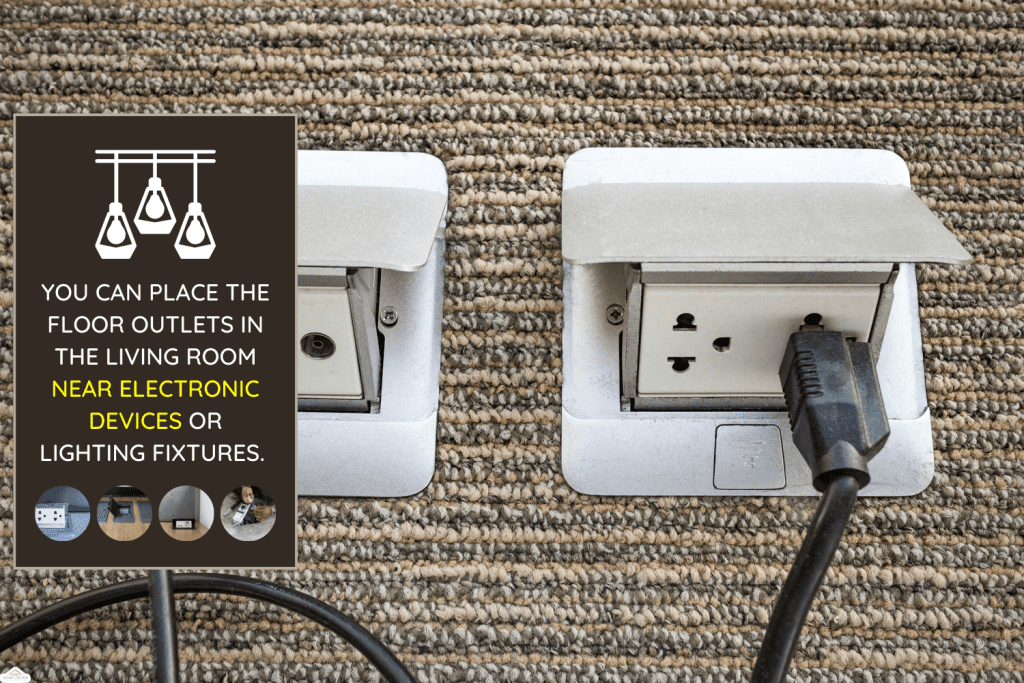
4. Enhancing the Value of Your Home
While it might seem like a small detail, incorporating hidden outlets can actually increase the perceived value of your home. It demonstrates attention to detail, a commitment to quality, and a forward-thinking approach to design. Potential buyers will appreciate the modern, clean aesthetic and the added safety and convenience. It’s an investment that pays off in both enjoyment and resale value.
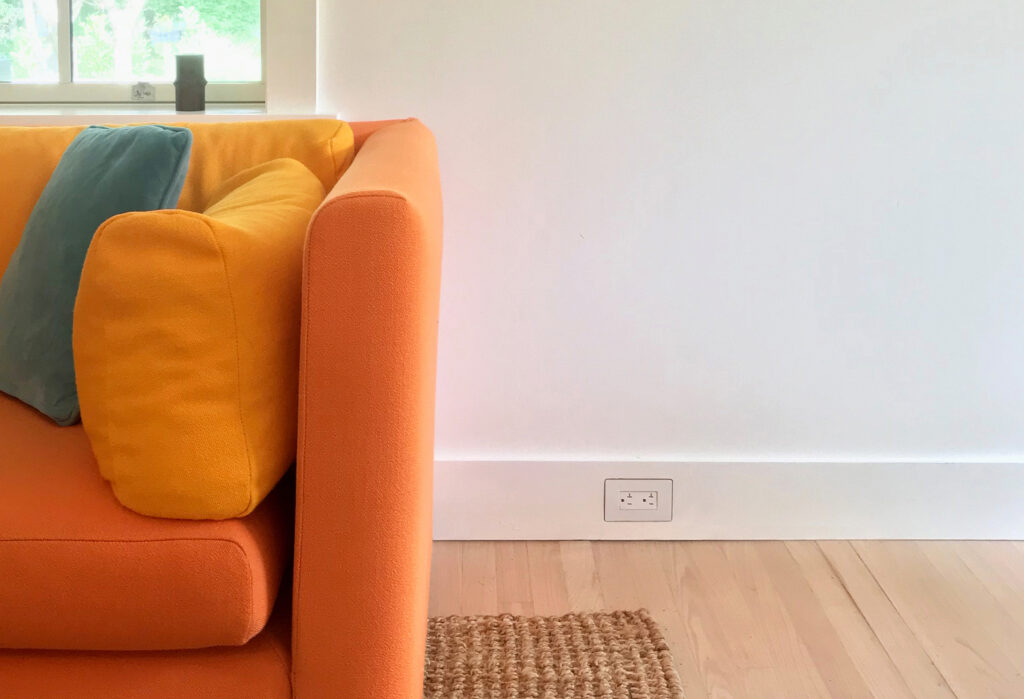
5. Creating a Sense of Luxury and Sophistication
Hidden outlets are often associated with high-end design and sophisticated interiors. They elevate the overall look and feel of your living room, creating a sense of luxury and attention to detail. It’s a subtle touch that speaks volumes about your personal style and your commitment to creating a beautiful and functional living space. No one will know how they are hidden but they will notice the cleanness of your room.
Types of Hidden Outlets: Choosing the Right Solution for Your Needs
Now that you understand the benefits, let’s explore the different types of hidden outlets available. The best choice for your living room will depend on your specific needs, your budget, and your personal style.
1. Pop-Up Outlets: Sleek and Discreet
Pop-up outlets are designed to be flush with the surface of a countertop, table, or floor. When needed, you simply press down on the outlet, and it pops up to reveal the receptacles. When not in use, it retracts back into its housing, leaving a clean, seamless surface. These are perfect for coffee tables, end tables, or even under sofas for convenient charging access.
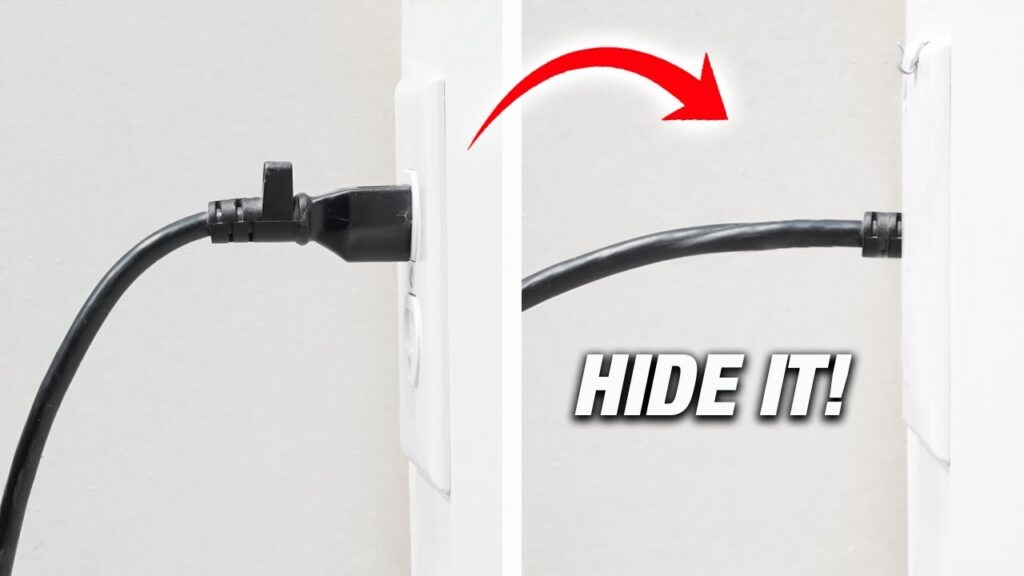
- Pros: Sleek design, easy to install (in some cases), versatile placement.
- Cons: Can be more expensive than other options, may require professional installation for floor placement.
2. Furniture Integrated Outlets: Seamless Integration
These outlets are designed to be built directly into your furniture, such as sofas, chairs, or entertainment centers. They can be seamlessly integrated into the design, making them virtually invisible. Many furniture manufacturers now offer furniture with built-in charging stations and outlets, making this a convenient option.
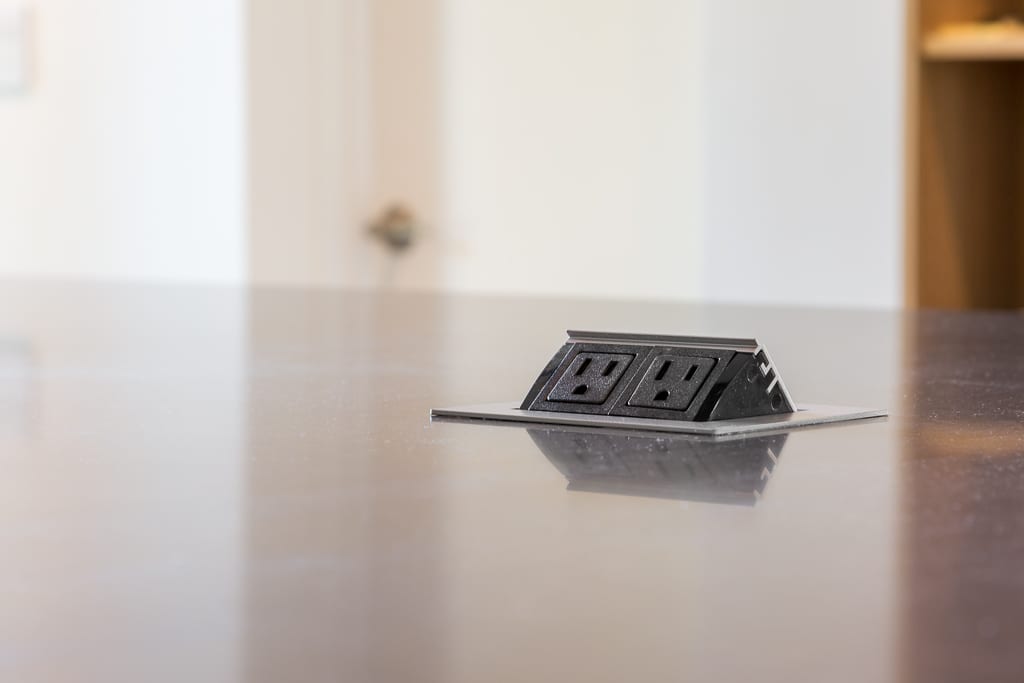
- Pros: Seamless integration, convenient access, often includes USB charging ports.
- Cons: Requires purchasing new furniture or modifying existing pieces, can be more expensive.
3. Under-Cabinet Outlets: Out of Sight, Out of Mind
While typically used in kitchens, under-cabinet outlets can also be used in living rooms with built-in cabinetry or shelving. They’re mounted underneath the cabinet, keeping them hidden from view but easily accessible when needed. These are great for powering lamps, speakers, or other devices on shelves or countertops.
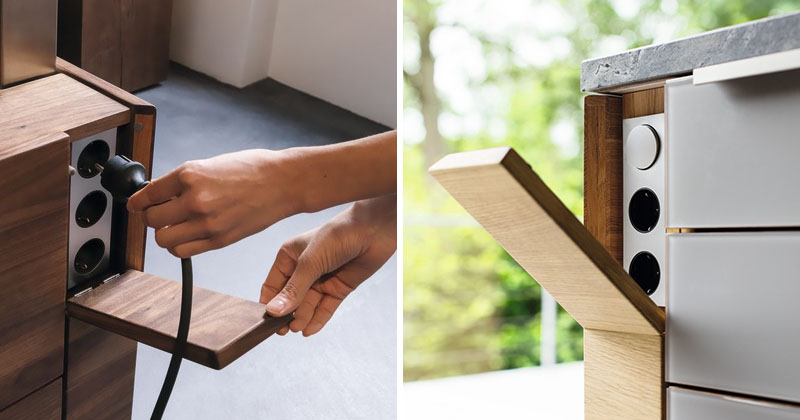
- Pros: Easy to install, relatively inexpensive, keeps outlets out of sight.
- Cons: Limited to areas with cabinets or shelves, may require some electrical knowledge for installation.
4. False Drawer/Panel Outlets: A Clever Disguise
This involves creating a false drawer or panel in your furniture or wall to conceal an outlet. The drawer or panel can be easily opened to access the outlet when needed. This is a great option for concealing outlets behind entertainment centers or side tables.

- Pros: Highly customizable, relatively inexpensive, can be integrated into existing furniture.
- Cons: Requires some DIY skills or professional carpentry work, may not be as seamless as other options.
5. Recessed Outlets: Flush with the Wall
Recessed outlets are designed to sit flush with the wall, minimizing their protrusion and creating a cleaner look. They’re typically used in new construction or remodeling projects, as they require modifying the wall cavity. These are a great option for minimizing the visual impact of outlets without completely hiding them.
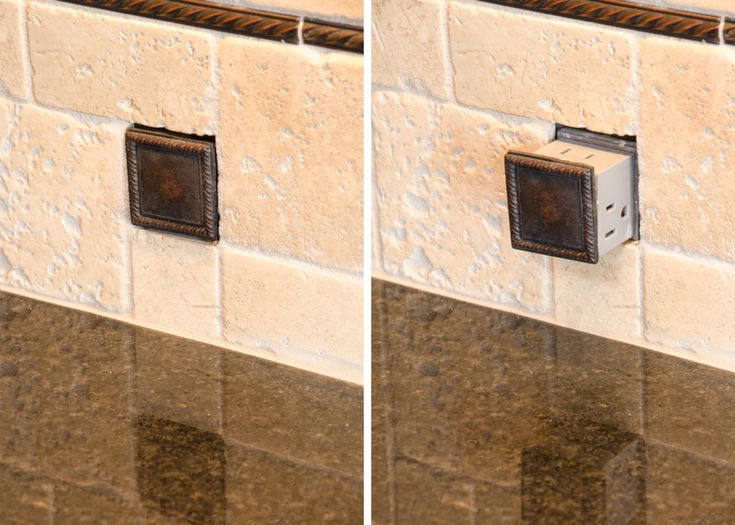
- Pros: Clean, minimalist look, durable and long-lasting.
- Cons: Requires professional installation, more expensive than standard outlets, limited placement options.
6. Cord Concealers and Cable Management Systems: The Temporary Fix
While not technically hidden outlets, cord concealers and cable management systems can help to minimize the visual clutter of cords and wires. These systems come in various forms, such as cord covers, cable sleeves, and cable ties, and they can be used to organize and hide cords along walls, floors, or furniture. This is a more affordable and less permanent solution than installing hidden outlets.
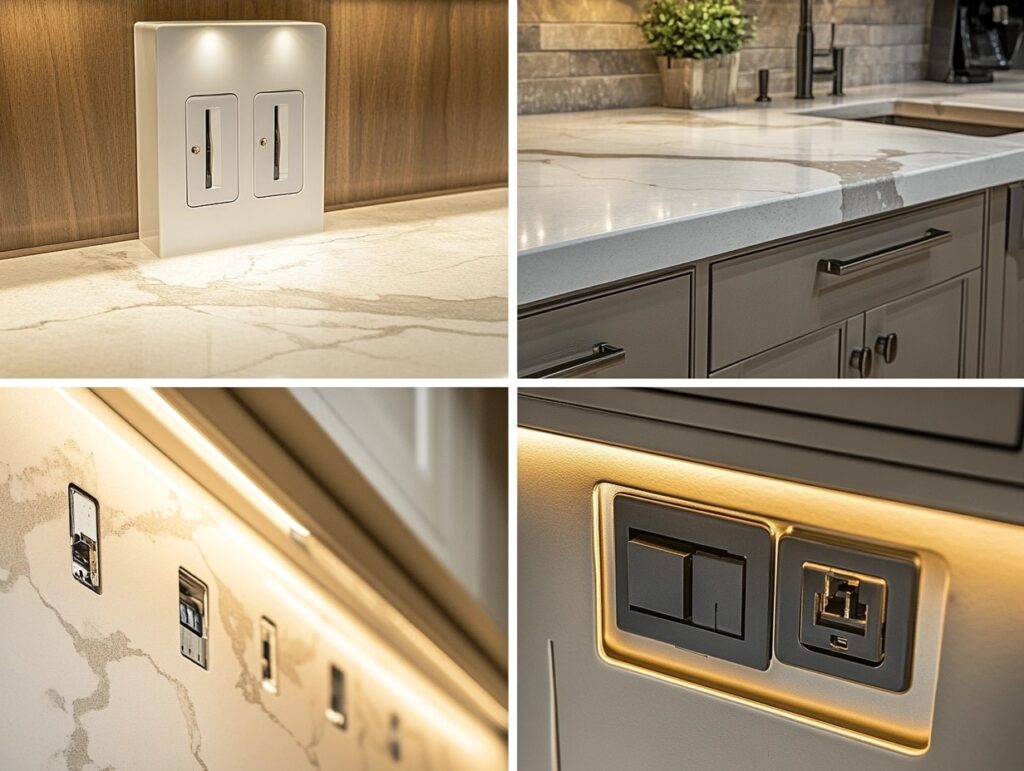
- Pros: Affordable, easy to install, versatile application.
- Cons: Doesn’t completely hide outlets, may not be as aesthetically pleasing as other options.
Strategic Placement: Where to Put Your Hidden Outlets
Choosing the right type of hidden outlet is only half the battle. Strategic placement is just as important. Here are some key considerations for placing your hidden outlets:
1. Identify Your Power Needs
Before you start planning, take inventory of all the devices you need to power in your living room. This includes TVs, sound systems, lamps, chargers, and any other electronic devices. Consider the location of these devices and the placement of your furniture. This will help you determine the optimal locations for your hidden outlets.
2. Consider Furniture Placement
Think about how you want to arrange your furniture. Do you want to be able to easily charge your phone or laptop while sitting on the sofa? Do you need an outlet near your favorite reading chair for a lamp? Place your hidden outlets in locations that are convenient and accessible based on your furniture arrangement.
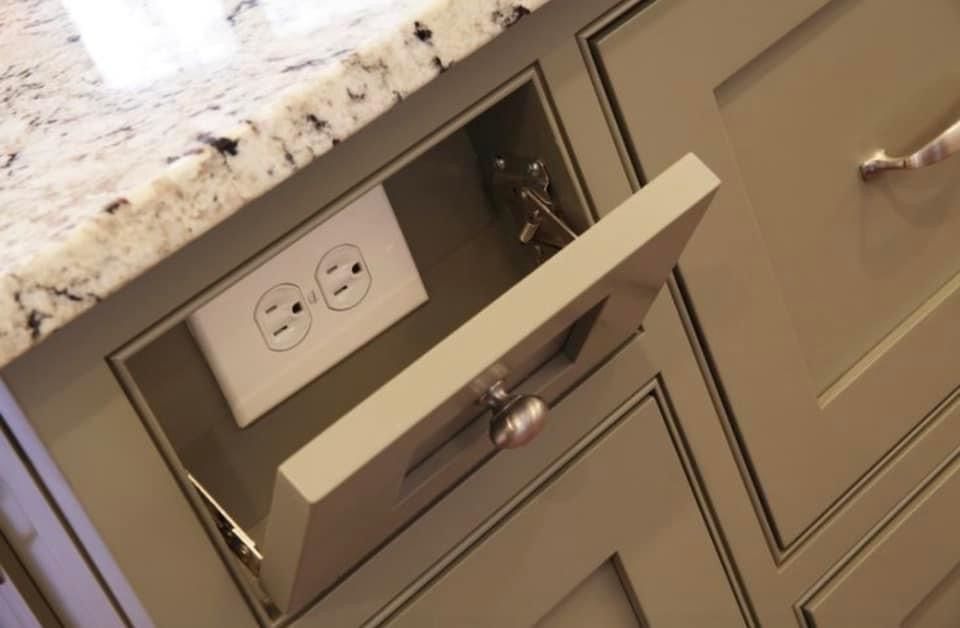
3. Think About Traffic Flow
Avoid placing hidden outlets in areas where people frequently walk, as this can create a tripping hazard. Opt for locations that are out of the way but still easily accessible. For example, under a sofa or behind an end table.
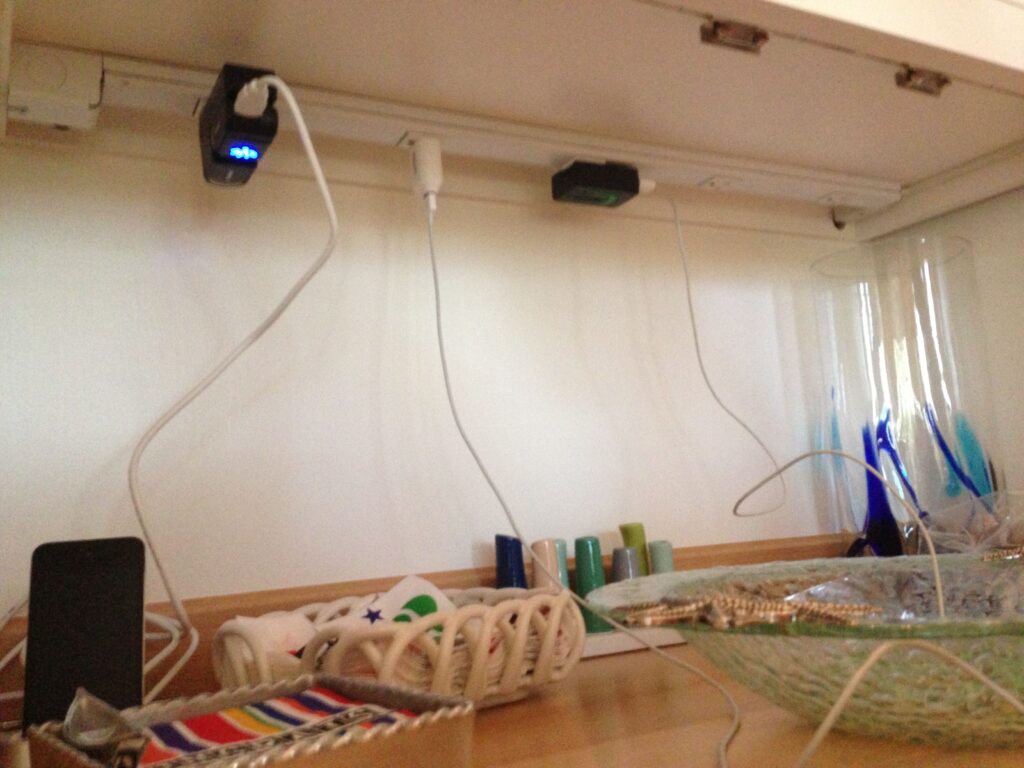
4. Blend with the Décor
Choose hidden outlets that blend seamlessly with your living room décor. Consider the color, finish, and style of the outlets and make sure they complement the surrounding furniture and walls. For example, if you have dark wood furniture, you might choose outlets with a dark wood finish.

5. Prioritize Safety
Always prioritize safety when placing your hidden outlets. Ensure that they are installed according to local electrical codes and that they are tamper-resistant, especially if you have young children or pets. Avoid placing outlets near water sources or in areas where they could be exposed to moisture.
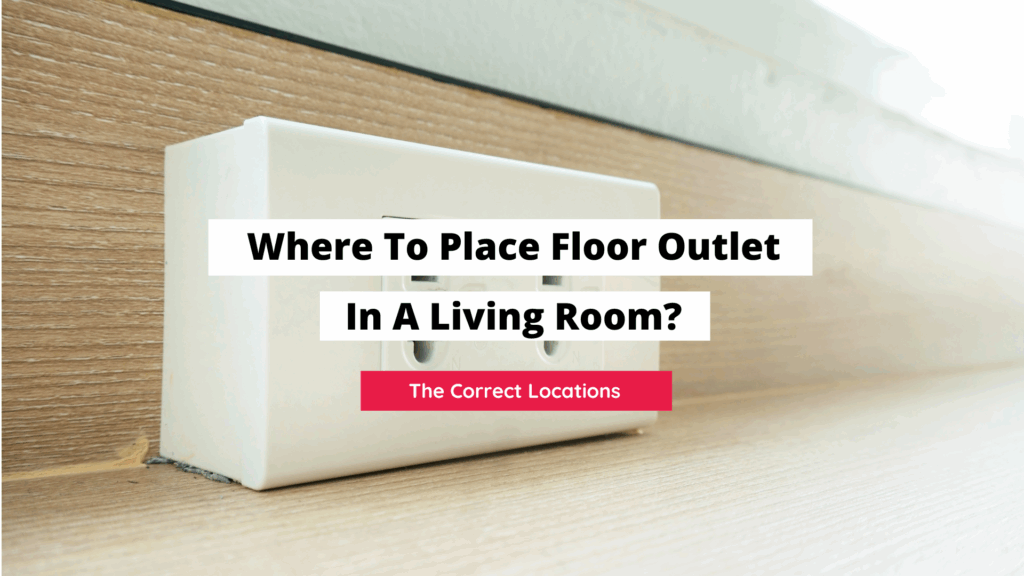
6. Don’t Forget About the Future
Think about your future power needs. Will you be adding more devices to your living room in the future? It’s always a good idea to install a few extra hidden outlets to accommodate your future needs.
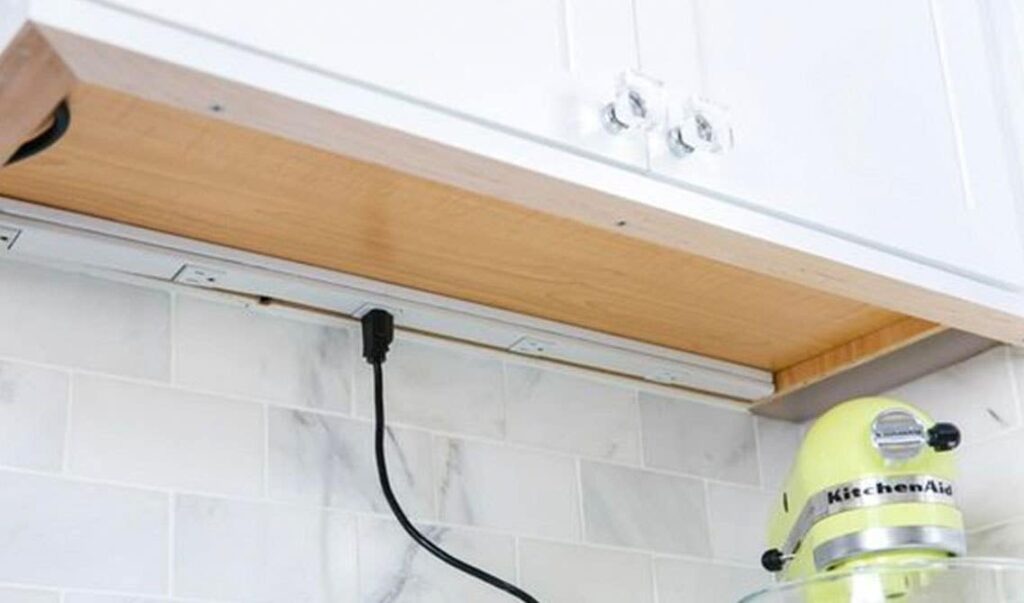
DIY Hidden Outlet Solutions: Creative and Budget-Friendly Options
Installing hidden outlets doesn’t always require a professional electrician or expensive new furniture. There are plenty of DIY solutions that can help you conceal your outlets on a budget.
1. Hollow Out a Book
This is a classic DIY trick. Select a large, sturdy book and carefully hollow out the inside, leaving a few pages intact to conceal the outlet. You can then place the book on a bookshelf or side table and run a power strip inside to create a hidden charging station.
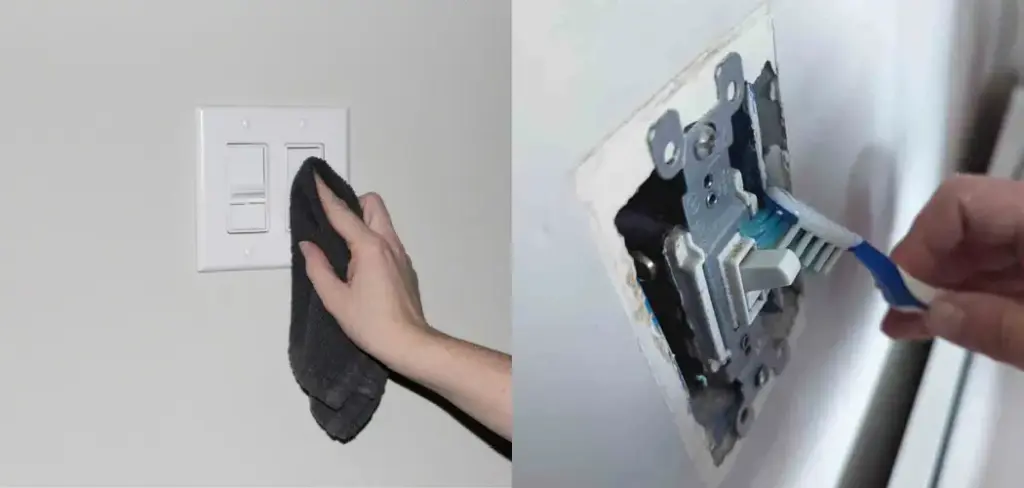
2. Repurpose a Decorative Box
Find a decorative box that complements your living room décor. Cut a hole in the back of the box for the power cord and place a power strip inside. You can then use the box to conceal your outlets and cords.
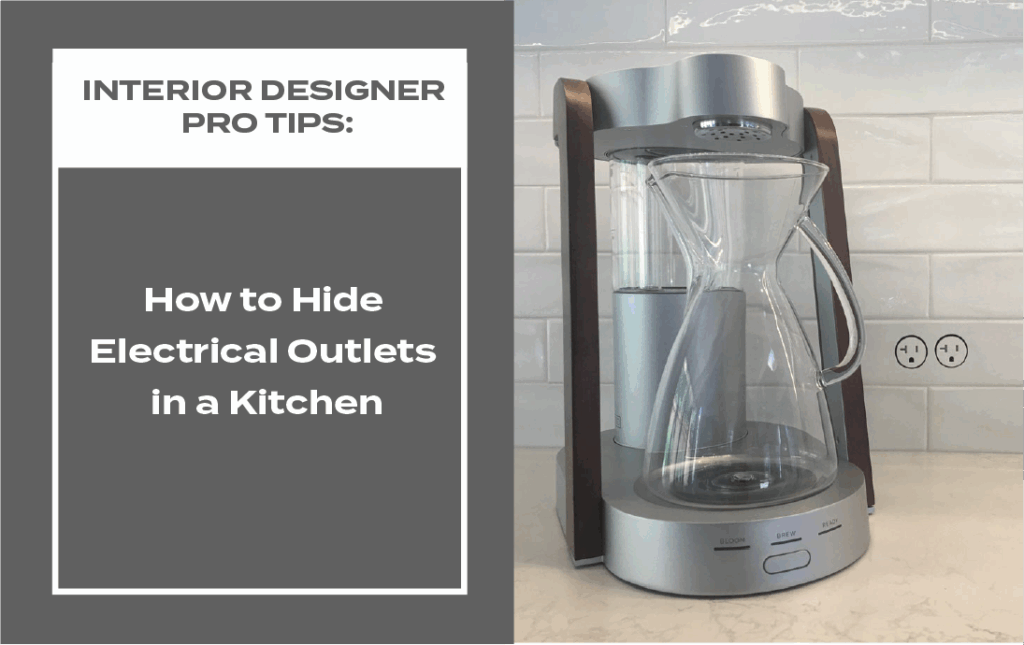
3. Hide Outlets Behind Artwork
Hang a piece of artwork over an existing outlet to conceal it from view. You can use a hinged frame or a canvas with a hidden compartment to allow easy access to the outlet when needed.
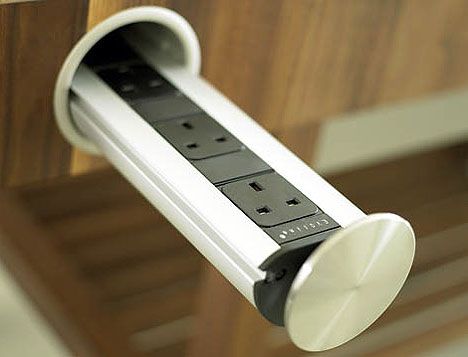
4. Create a Cord Management Box
Build a simple box out of wood or purchase a premade cord management box. Place the box behind your entertainment center or sofa to conceal cords and power strips. You can also paint the box to match your walls or furniture.
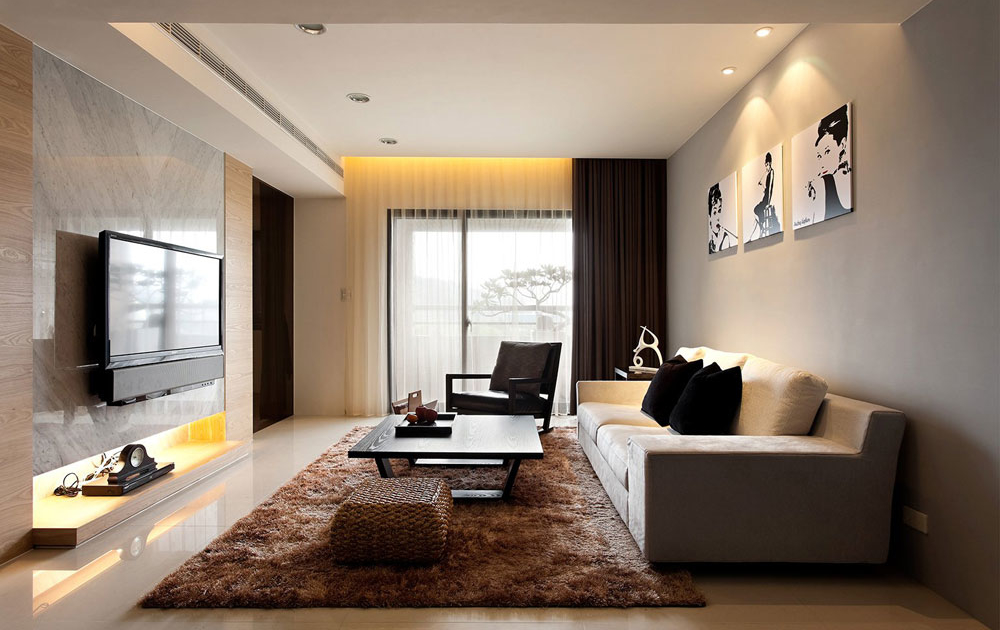
5. Disguise Outlets with Fabric
Use fabric to create a decorative cover for your outlets. Cut a piece of fabric that is slightly larger than the outlet and sew a pocket to hold the outlet. You can then hang the fabric over the outlet, concealing it from view.
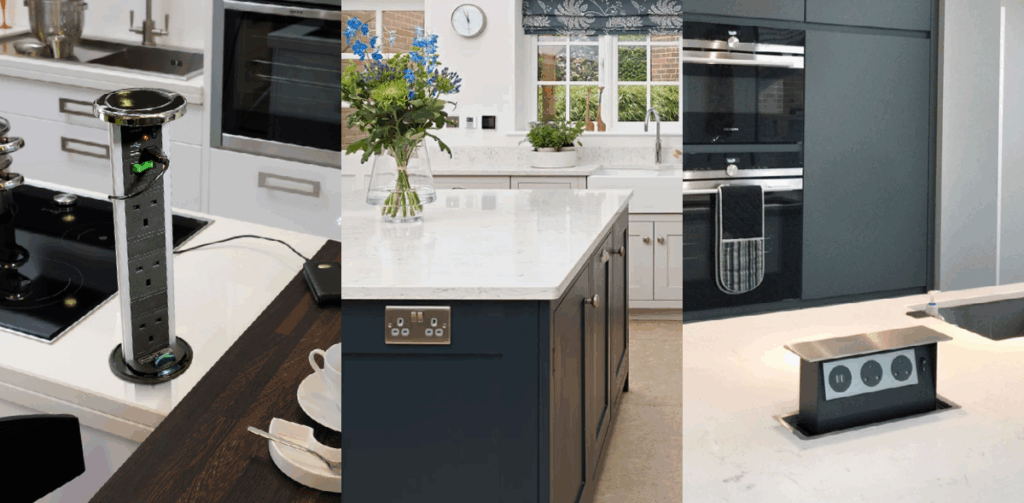
Professional Installation vs. DIY: Knowing When to Call in the Experts
While some hidden outlet solutions are DIY-friendly, others require professional installation. It’s important to know when to call in the experts to ensure your safety and the integrity of your electrical system.
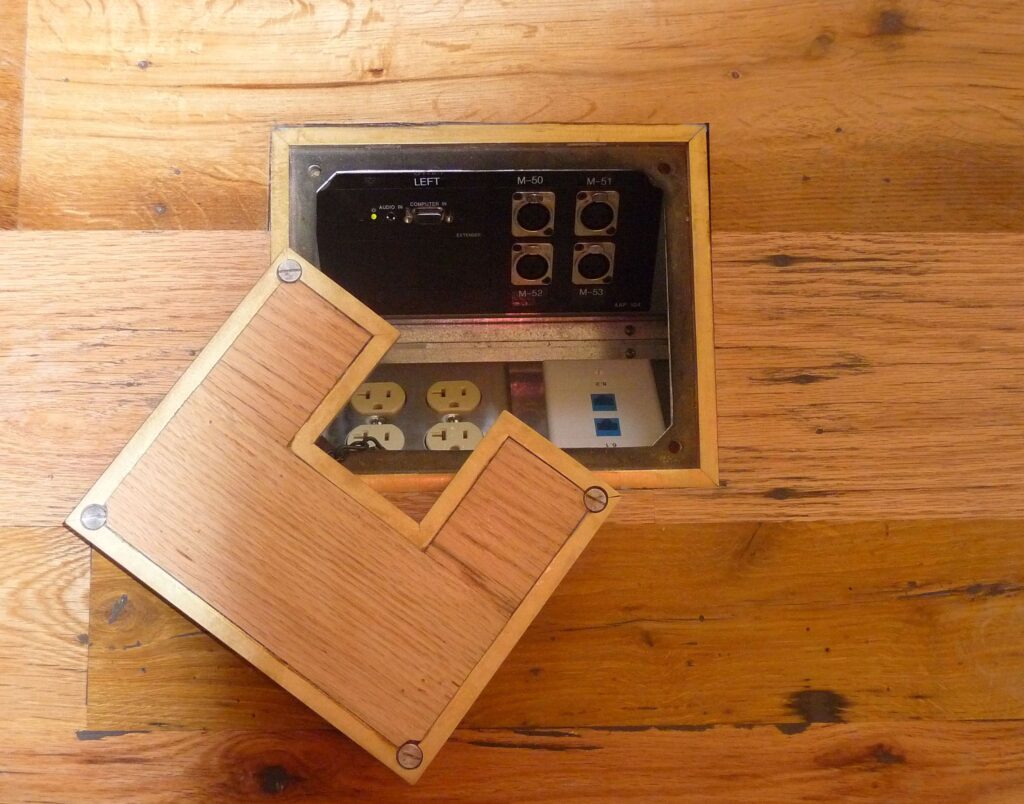
When to DIY:
- Simple cord management solutions
- Hiding outlets behind furniture or artwork
- Using decorative boxes or containers
- No electrical modifications required
When to Call a Professional:
- Installing pop-up outlets in floors or countertops
- Modifying electrical wiring
- Adding new circuits
- Working with recessed outlets
- Any project that involves electrical work that you are not comfortable with
Remember, electrical work can be dangerous, and it’s always better to be safe than sorry. If you are unsure about any aspect of the installation process, consult with a qualified electrician.
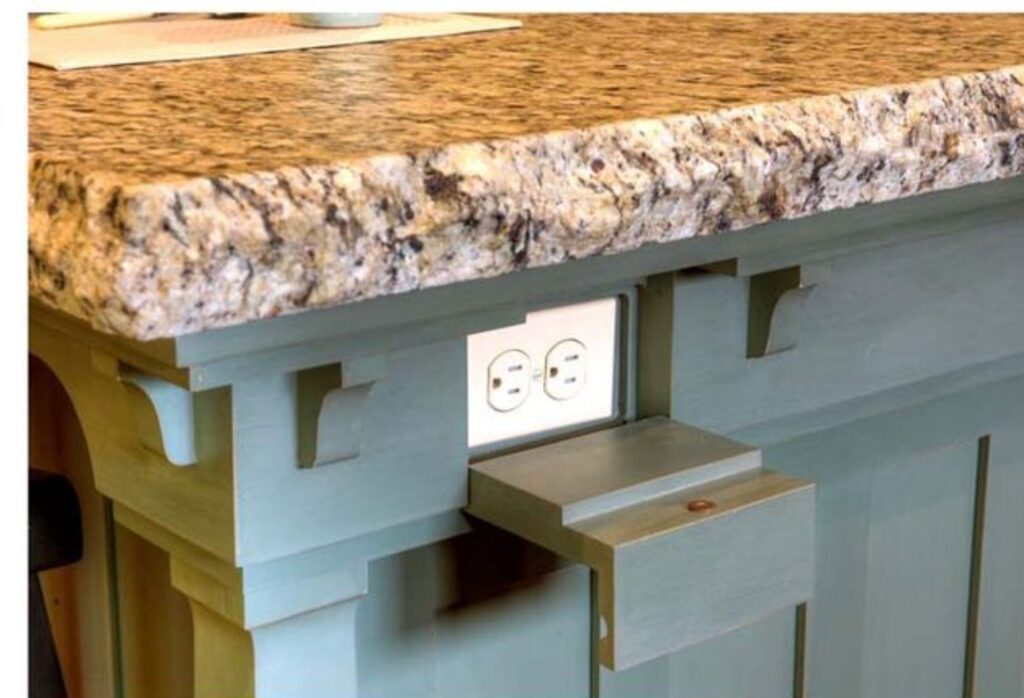
Maintaining Your Hidden Outlets: Keeping Them Clean and Functional
Once you’ve installed your hidden outlets, it’s important to maintain them properly to ensure their longevity and functionality.
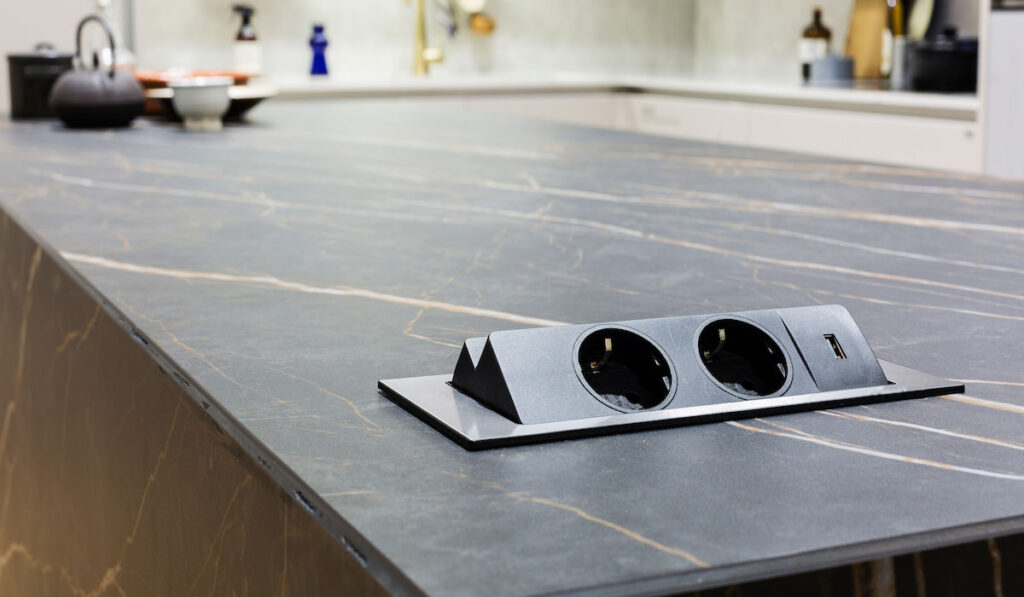
1. Clean Regularly
Dust and debris can accumulate in and around your hidden outlets, so it’s important to clean them regularly. Use a soft cloth or a vacuum cleaner with a brush attachment to remove dust and debris.
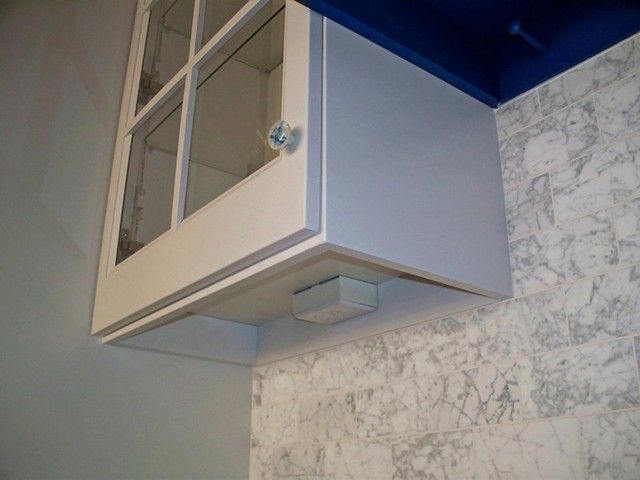
2. Inspect for Damage
Periodically inspect your hidden outlets for any signs of damage, such as cracks, loose wires, or discoloration. If you notice any damage, contact a qualified electrician to have the outlet repaired or replaced.
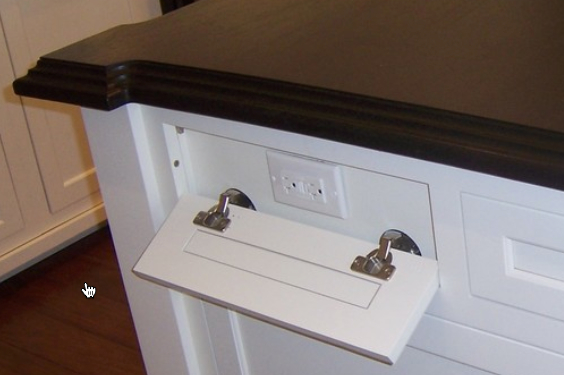
3. Avoid Overloading
Avoid overloading your hidden outlets with too many devices. This can cause the outlets to overheat and potentially start a fire. Check the wattage rating of your outlets and make sure you are not exceeding it.

4. Protect from Moisture
Protect your hidden outlets from moisture. Avoid placing them near water sources or in areas where they could be exposed to spills. If an outlet gets wet, immediately turn off the power at the breaker and contact a qualified electrician.
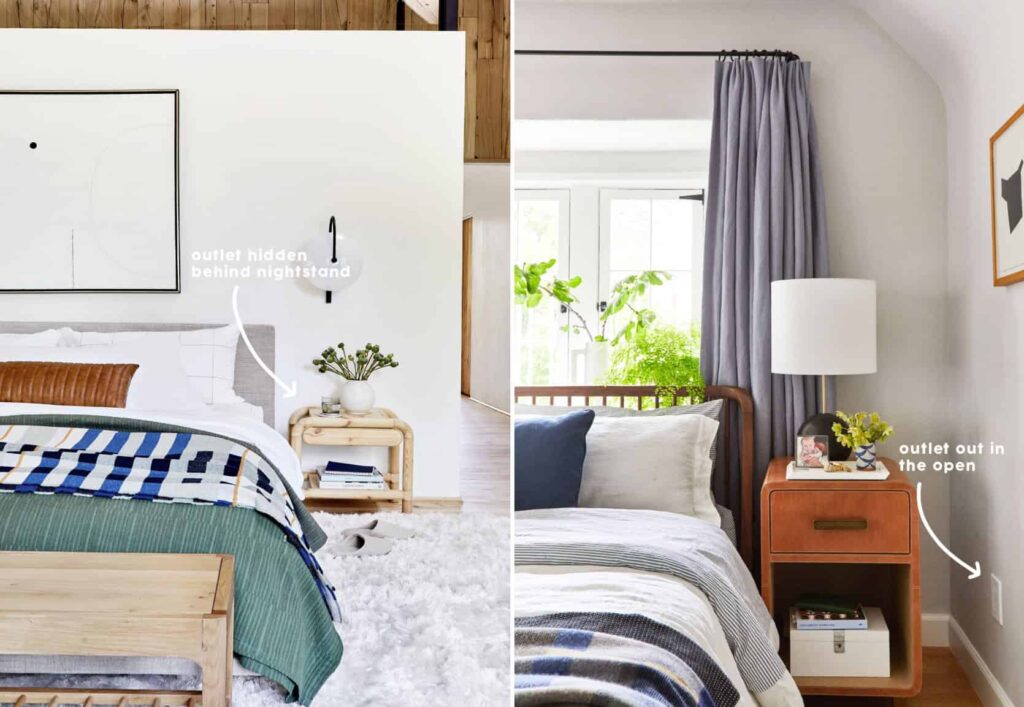
5. Use Surge Protectors
Use surge protectors with your hidden outlets to protect your electronic devices from power surges. Surge protectors can help to prevent damage to your devices from lightning strikes or other electrical disturbances.
Beyond Outlets: Complete Cord Management Strategies
Hiding outlets is a great start, but true living room serenity requires comprehensive cord management. Here’s how to tackle the tangle:
1. Shorten Excess Cord Length:
Those excessively long power cords are often the biggest culprits behind the chaos. If possible, replace longer cords with shorter ones that are just long enough to reach the outlet. For cords that cannot be replaced, use cord shorteners or wraps to reduce the excess length.

2. Velcro Straps and Cable Ties:
Bundle cords together using Velcro straps or cable ties. This not only makes the area neater, but also prevents cords from becoming tangled with each other. Labeling each cord can also be helpful for quick identification when you need to disconnect something.
3. Wall-Mounted Cord Channels:
For cords that need to run along a wall, use wall-mounted cord channels. These channels can be painted to match your wall color, making them blend seamlessly into the background. They provide a clean and organized way to conceal cords without having to route them inside the wall.
4. Furniture with Built-in Cord Management:
Consider investing in furniture that includes built-in cord management features. Many modern entertainment centers, desks, and side tables come with compartments or channels designed to conceal cords and cables. This can be an excellent way to keep your living room looking tidy and organized.
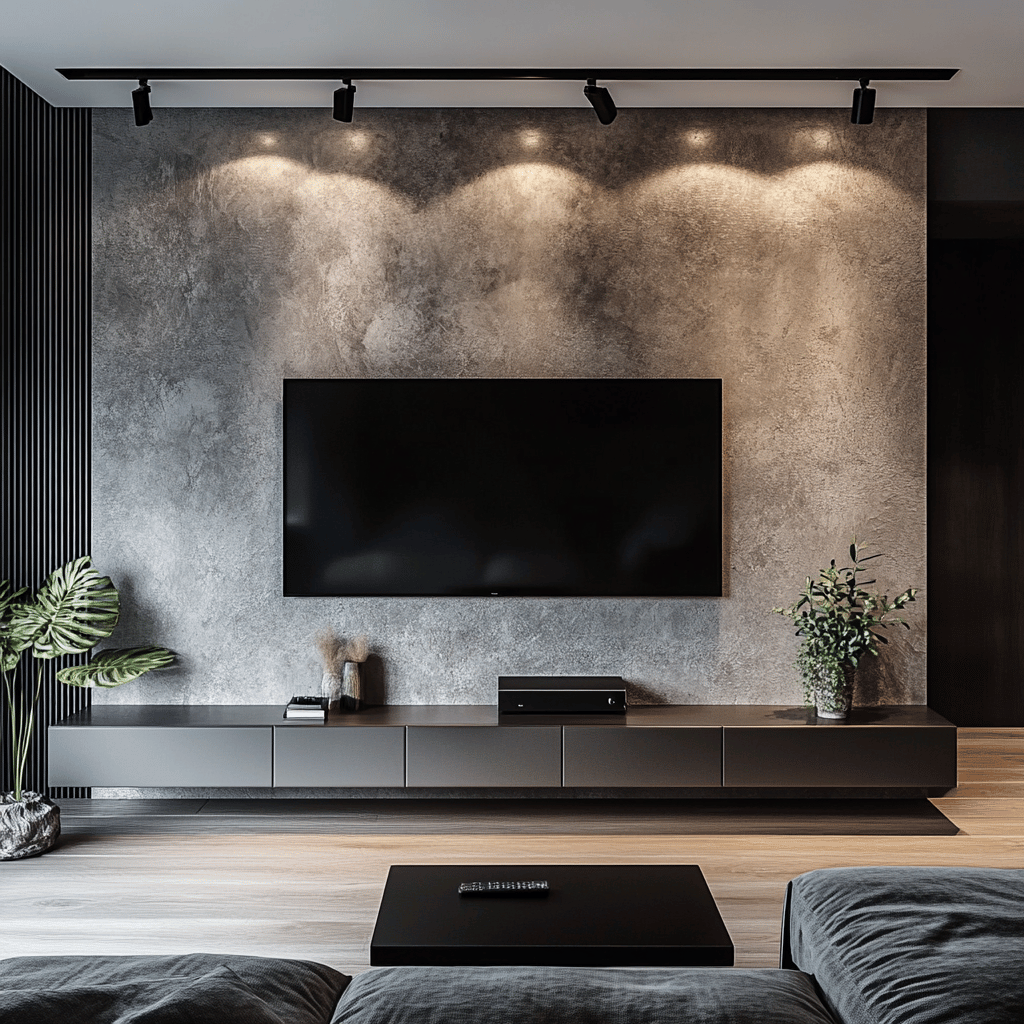
5. Wireless Technology:
Embrace wireless technology whenever possible. Replace wired devices with wireless alternatives, such as Bluetooth speakers, wireless keyboards, and wireless chargers. This can significantly reduce the number of cords cluttering your living room.
The Future of Hidden Outlets: What’s on the Horizon?
The world of hidden outlets is constantly evolving, with new technologies and designs emerging all the time. Here are some trends to watch for in the future:
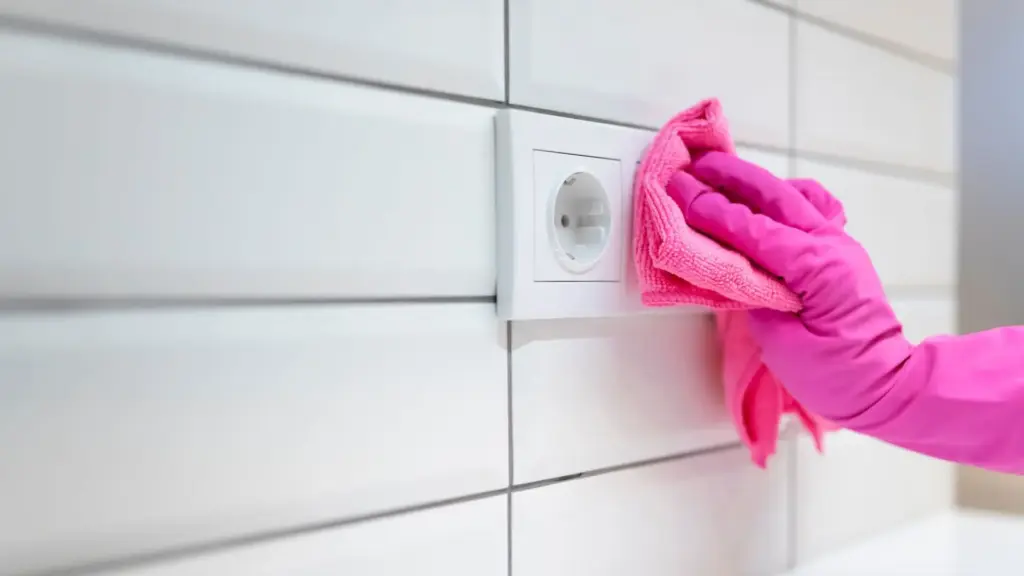
1. Smart Outlets:
Smart outlets are becoming increasingly popular. These outlets can be controlled remotely via a smartphone or voice assistant, allowing you to turn devices on and off, monitor energy usage, and even schedule when devices should be powered on or off. They’re a great way to save energy and add convenience to your living room.
2. Wireless Charging:
Wireless charging technology is becoming more widespread, making it easier to charge your devices without the need for cords. Expect to see more furniture and surfaces with built-in wireless charging pads.
3. Modular Outlets:
Modular outlets allow you to customize the configuration of your outlets based on your specific needs. You can add or remove receptacles, USB ports, or other features as needed. This flexibility makes them a great option for living rooms with evolving power needs.
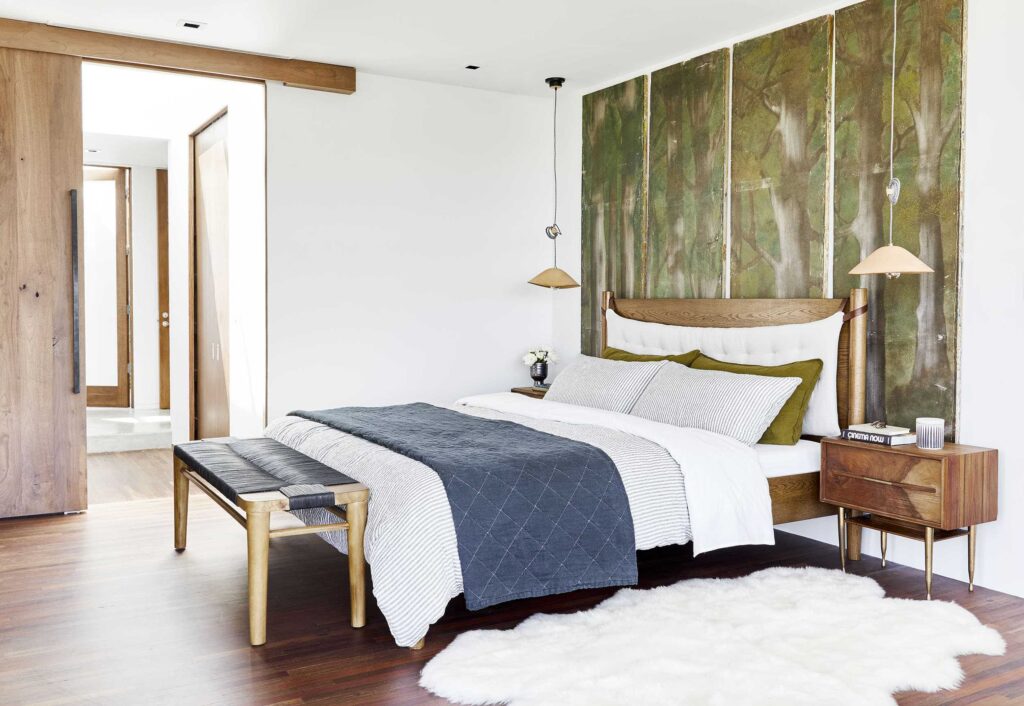
4. Invisible Outlets:
Researchers are working on developing truly invisible outlets that can be seamlessly integrated into walls or furniture. These outlets would be completely hidden from view until needed, providing the ultimate in clean, minimalist design.
Conclusion: Reclaim Your Living Room with Hidden Outlets
Hidden outlets are more than just a design trend; they are a practical solution for creating a cleaner, safer, and more functional living room. By strategically concealing your power sources, you can eliminate visual clutter, protect your family from electrical hazards, and maximize the use of your living room space. Whether you choose a DIY solution or opt for professional installation, the benefits of hidden outlets are undeniable. So, take control of your cords and reclaim your living room as a haven of calm and order.
From pop-up wonders to furniture-integrated marvels, the world of hidden outlets is ripe with possibilities. Don’t be afraid to experiment and find the solutions that best suit your style and needs. Remember, the goal is to create a space that is both beautiful and functional, where technology seamlessly integrates into your life without dominating it. So, go ahead, unplug from the chaos and plug into the serenity of a clutter-free living room. Your eyes (and your sanity) will thank you.

 Nimila
Nimila
